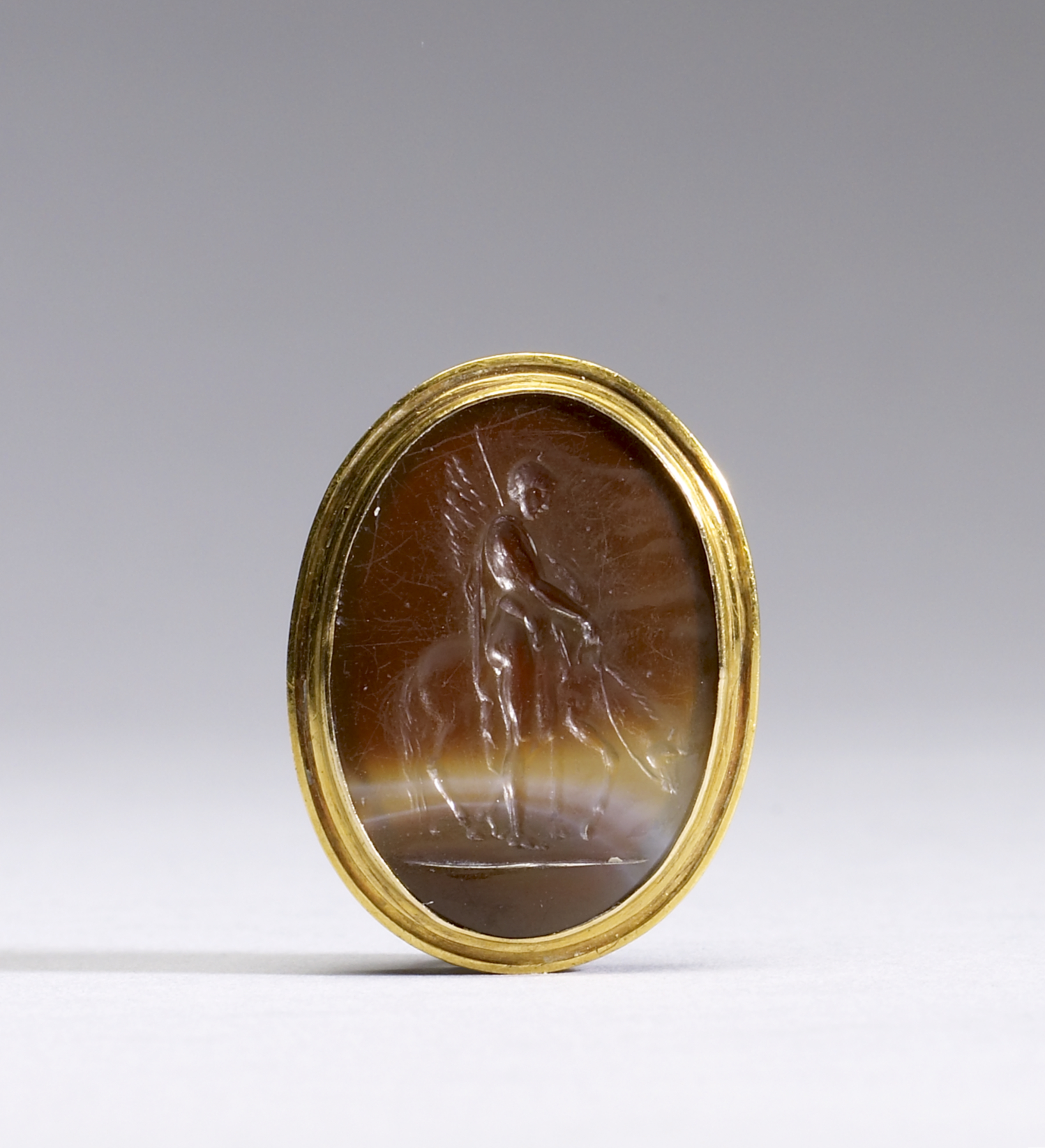Intaglio with Bellerophon and Pegasus Set in a Mount
Gem engraving was a major art form in ancient Greece and Rome. Precious stones were thought to have healing and protective powers and were used as amulets and seals as well as jewelry. Engraved or incised gems, known as intaglios, were often decorated with winged creatures, such as the sphinx and the griffin.
The immortal winged horse Pegasos sprang from Medusa's neck when she was decapitated by the hero Perseus. While Pegasos was drinking from a spring at Corinth, the hero Bellerophon tamed him with a bridle given to him by the goddess Athena.
Provenance
Provenance (from the French provenir, 'to come from/forth') is the chronology of the ownership, custody, or location of a historical object. Learn more about provenance at the Walters.
Joseph Brummer, New York [date and mode of acquisition unknown]; Walters Art Museum, 1942, by purchase.
Exhibitions
| 2009-2011 | Heroes: Mortals and Myths in Ancient Greece. The Walters Art Museum, Baltimore; Frist Center for the Visual Arts, Nashville; San Diego Museum Of Art, San Diego; Alexander S. Onassis Public Benefit Foundation (USA), New York. |
| 2009 | Things With Wings: Mythological Figures in Ancient Greek Art. Ward Museum, Salisbury. |
| 2005-2006 | Things With Wings: Mythological Figures in Ancient Greek Art. The Walters Art Museum, Baltimore. |
Geographies
Roman Empire (Place of Origin)
Measurements
Bezel H: 1 x W: 11/16 in. (2.6 x 1.8 cm); Mount H: 1 1/4 x W: 7/8 x D: 1/4 in. (3.1 x 2.3 x 0.64 cm)
Credit Line
Museum purchase, 1942
Location in Museum
Not on view
Accession Number
In libraries, galleries, museums, and archives, an accession number is a unique identifier assigned to each object in the collection.
In libraries, galleries, museums, and archives, an accession number is a unique identifier assigned to each object in the collection.
42.1317


